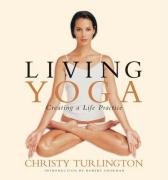Don't get too excited. I'm not going to reveal some magic greasy burger you can eat and turn into Kate Moss.
This is genuine science and it's a fascinating discovery that has potential implications for the management of disease and diabetes as well as weight management for healthy, fit people.
The body stores 3 types of fat: white, beige and brown.
White fat is the one you normally think of - the most common type of fat that is typically stored around the stomach, thighs and hips.

On the other hand, the more rare brown fat has heat-producing properties that burn major calories just by existing. Science - as discussed in a recent New Scientist magazine article - has proven that brown fat is activated through cold temperatures. Nothing too extreme - even wearing a tank top in 14 degrees will do it. Brown fat cells play an essential role in wild animals, allowing them to survive in cold and harsh environments by ensuring blood circulates and body heat is maintained.
Beige cells develop in the common white fat when brown cells are activated and THIS is where and when the fat-burning and metabolism boost happens. Beige fat cells = leanness in humans and the reduction of metabolic disease and obesity in mice. Current studies are looking into genetic and drug therapy that can produce and encourage growth and activation of beige fat cells.
While humans typically store only a very small quantity of brown cells, they are to be found in the deep back muscles around the spine and neck. Interestingly, overweight and obese people have been found to have a lower concentration of brown fat cells. In trials of drug therapy that looked at increasing the activity of brown cells, dangerous side effects were noticed at high doses so at present, there is no effective means of increasing their quantity or activity safely.
Beige cells on the other hand develop through being exposed to the cold, as I mentioned. Once they have been activated in the cold atmosphere, they are retained even when you warm up again. So it would seem that intermittent exposure to cold environments can maintain a metabolic boosting quantity of beige fat cells, which limit and reduce weight gain.
This is all still in the early stages of study. What HAS been proven is that there are systemic factors that influence brown and beige fat and look promising for weight loss therapy.
Irisin is a hormone found in muscle - built through exercise - which has obesity-prevention qualities and enhances energy production in cells. The takeaway message?
EXERCISE. Both endurance and high-intensity bursts are recommended.
Calcium - either three or four daily servings of low-fat dairy or a supplement - can increase your body's fat burning ability. Calcium is stored in fat cells and regulates how it is stored and broken down by the body. The greater the level of calcium, the more fat it will burn according to studies.
Being TOO lean and having TOO LITTLE body fat will have the reverse effect. The body requires fat to retain calcium, vitamin D and other essential hormones and vitamins which are dependent on fat to remain and stay active.
A study from the Nutrition Institute of University of Tennessee showed mice given calcium supplements had good weight loss results, when supplements were combined with a restricted-calorie diet. Mice getting their calcium via supplements had a
42% decrease in body fat, whereas mice eating without supplements had an 8% body fat loss.
However, calcium from dairy products produced the best results. Mice on the "medium-dairy" diet had a
60% decrease in body fat, while those on the "high-dairy" diet
lost 69% body fat.

The takeaway message?
GET YOUR CALCIUM. I am not a major dairy fan and I know many people prefer alternatives. If this is the case, I recommend Nature's Way Calcium & K2 + Vitamin D.
Research shows that Vitamin K2 binds calcium to the bone mineral, ensuring that it is absorbed where it is NEEDED rather than depositing in the arteries. I recommend this supplement because it's the first to make K2 available and it's widely available (supermarkets, pharmacies and online at
www.health365.com.au)
And eat well. There's no great mystery to it. If you are in need of some ideas, go recipe book hunting. My latest find is
"the SuperFoods Kitchen" which has breakfast, lunch, dinner and dessert options compiled from home cooks all over Australia. So inspiring! A crowd sourced cookbook!
 Coffee is a natural stimulant and a powerful antioxidant.
This not only makes it the perfect pre-workout, pre-work kickstart, but also a
wicked tonic for your skin and hair.
Coffee is a natural stimulant and a powerful antioxidant.
This not only makes it the perfect pre-workout, pre-work kickstart, but also a
wicked tonic for your skin and hair.













































































